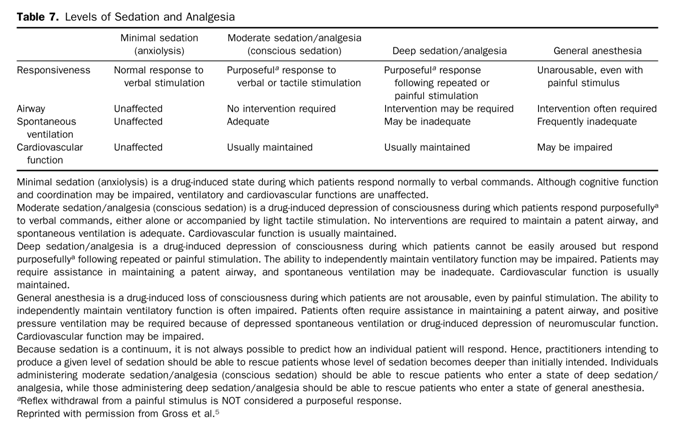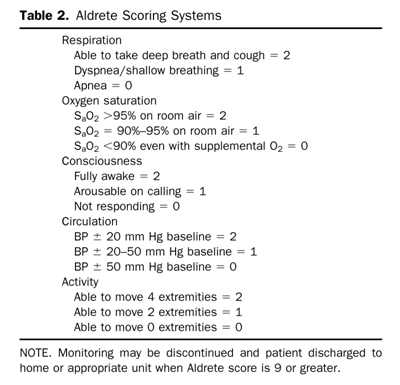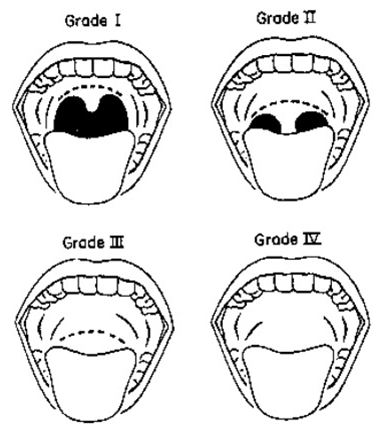 [Various criteria related to conscious sedation]
[Various criteria related to conscious sedation] [Various criteria related to conscious sedation]
[Various criteria related to conscious sedation]
[ASA classification]
- I: The patient is normal and healthy.
- II: The patient has mild systemic disease that does not limit their activities
- III: The patient has moderate or severe systemic disease, which does limit their activities
- IV: The patient has severe systemic disease that is a constant potential threat to life
- V: The patient is morbid and is at substantial risk of death within 24 hours
- E: Emergency stats: in addition to indicating underlying ASA status (I-V), any patient undergoing an emergency procedure is indicated by the suffix "E"
[Level of sedation and analgesia]
Minimal sedation (anxiolysis)
- Normal response to verbal commands
- Impaired cognitive function & coordination
Moderate sedation (conscious sedation)
- Purposeful response to verbal or tactile stimulation
- Ventilatory and cardiovascular function are maintained
Deep sedation
- Purposeful response to painful stimulation
- Airway support may be required
General anesthesia
- Unarousable, even to painful stimulation
- Often require assistance in maintaining airway, cardiovascular function may be impaired

참고문헌: Cohen LB. Gastroenterology 2007;133:675-701
[Ramsey sedation scale]
- 1: awake and anxious, agitated, or restless
- 2: awake, cooperative, accepting ventilation, oriented, tranquil
- 3: awake, responds only to commands
- 4: asleep; brisk response to light glabellar tap or loud noise
- 5: asleep; sluggish response to light glabellar tap or louse noise stimulus but does not respond to painful stimulus
- 6: asleep; no response to light glabellar tap or lous noise
[Adlrete scoring system to determine when to discharge]

참고문헌: Cohen LB. Gastroenterology 2007;133:675-701
[Mallampati score used to predict difficult intubation]

참고문헌: Cohen LB. Gastroenterology 2007;133:675-701
[Home]